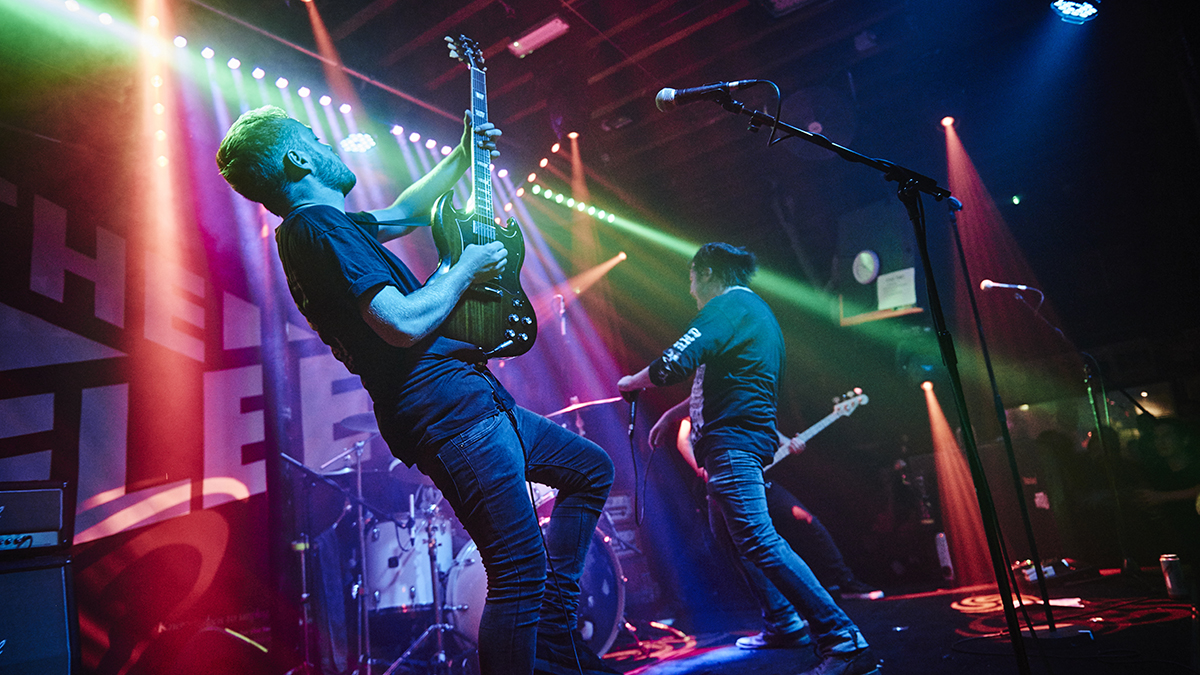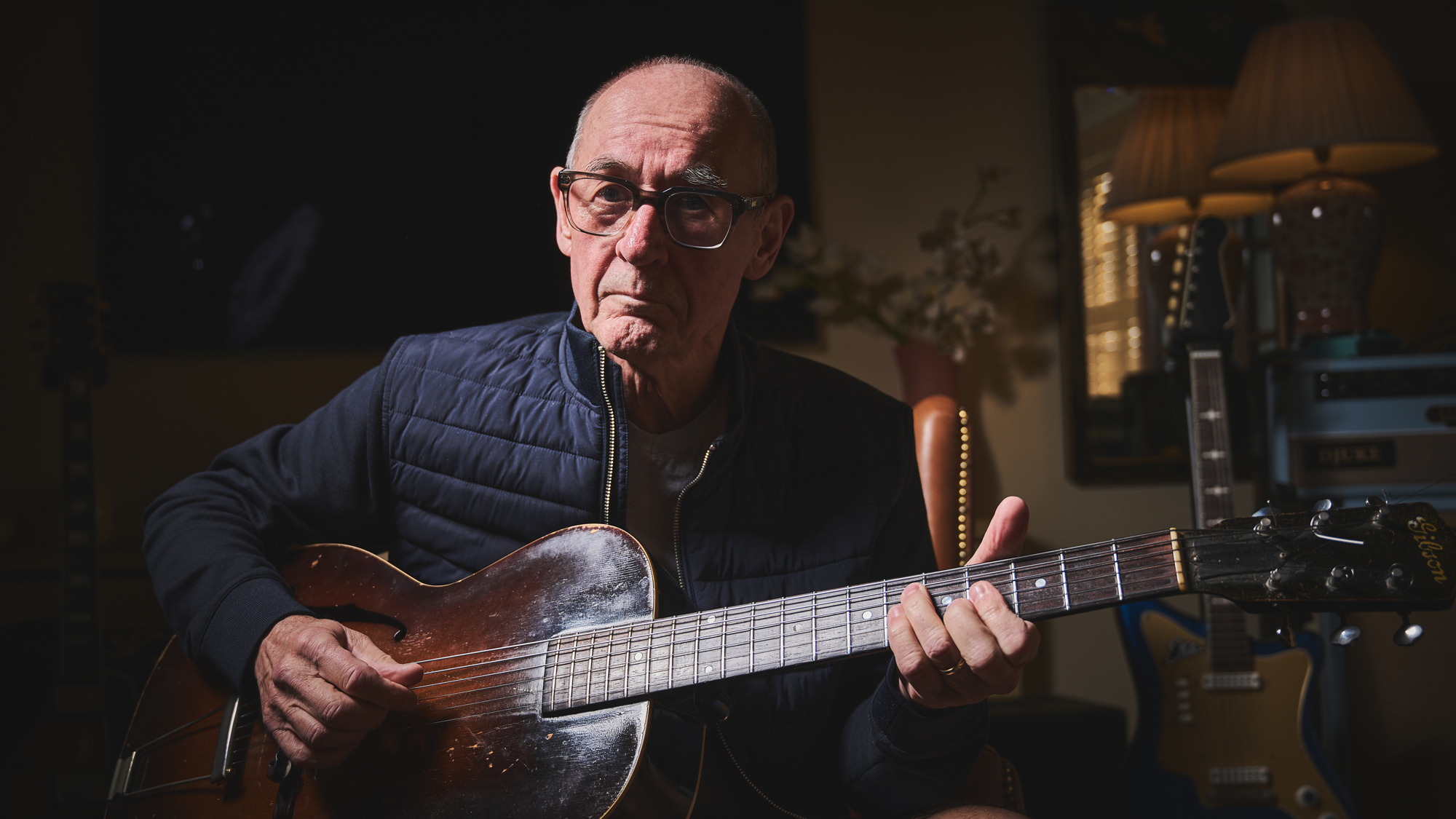10 easy and practical tips for getting a great live guitar sound
Our guide to help you create a sonic storm onstage

BACK TO LIVE: As we hit the middle of 2021, guitarists around the world will be making plans for a post-pandemic return to live performance. Many others will be preparing to play their first gigs after learning to play the instrument during the various lockdown periods.
If you fit into either of those categories, you’ve probably started thinking about how to get your guitar sound ready for the stage. This guide to getting a great live guitar sound is here to help you, offering soundchecking advice, pedalboard setup tips, ways to achieve clean, noise-free tones, and much more. On top of that, we’ll link you to some of the best kit we’ve rocked and rated here at Guitar World. So, plug in and let’s rock!
1. Keep onstage levels moderate
Can’t wait to crank your guitar amp up to 11? You may want to reconsider, particularly if the amp is mic’d up through a PA system. As well as keeping your sound guy sweet, dialling back those levels from ear-splitting to merely moderate will give you greater control over both the house mix and your onstage monitoring. If you hanker for a ‘cranked amp’ tone, consider using an amp with less power, paired to a smaller speaker cab with fewer drivers.
The last few years have seen the rise of portable combo amps and mini heads. These are often equipped with onboard power soaks designed to run in low power modes, enabling you to dial in sweet saturation at lower levels. We really rate Peavey’s Invective MH Mini Amp Head as a great amp for metal, and the long-established Tubemeister series from Hughes & Kettner still packs a punch as a practical rock amp.
2. Empty room vs full room effect
You have one primary goal during soundcheck: to set up your gear so that you can hear yourself and your bandmates clearly. Our advice? Get to the venue early, get friendly with the sound engineer and spend some time checking that your levels are consistent when you change amp channels or engage an effect.
Most important is to be aware that an empty room during soundcheck ‘sounds’ different to the same venue when it’s full of headbanging rockers! Your adoring audience will be dampening the echoes that you carefully compensated for during soundcheck, which is why guitarists often turn their amps up further once a gig gets under way. Be aware of the dreaded ‘volume creep’ and ensure that you turn up to gig levels during soundcheck.

3. Tackling feedback
When it comes to feedback, any guitarist using an amp onstage has two primary concerns: volume level and the guitar’s location in relation to the speaker. We’ve already waxed lyrical about onstage levels, so let’s talk location. For the ‘infinite sustain’ effect in Parisienne Walkways, late blues-rock great Gary Moore would locate the precise spot onstage where his Gibson Les Paul and cranked Marshall amps would feed back the most, and mark it with tape on the floor. All during soundcheck, of course.
Get The Pick Newsletter
All the latest guitar news, interviews, lessons, reviews, deals and more, direct to your inbox!
To prevent unintended feedback, you need to do the opposite. Dial in the loudest sound you’ll play, then identify the spots where you encounter feedback. If it’s a constant problem and you have to keep your amp cranked, consider adding an EQ pedal to your ’board. A narrow ‘notch filter’ cut matched to the feedback frequency can improve matters drastically.
4. Get your pedals in order
If you’re looking for creative inspiration, it’ll pay to experiment with the order of your guitar pedals. However, there are a few signal chain golden rules that’ll help you to get great tones without trial and error. Here’s the conventional wisdom… Wah pedals come first, before preamps and distortion/overdrive pedals. Plug these into your amp’s input. If your amp has an effects loop, add delays, modulations and reverb pedals in that order here. These latter effects create copies of a signal, which is why they usually sound better after any gain or distortion. If you reverse them, expect a muddy tone that lacks clarity.
Compressors are best placed either first in your chain (great for taming spiky funk chops) or last (more akin to studio compression; great for smooth lead tones). Like we say, these are general conventions, so feel free to write your own rulebook!
5. Clean boost: the unsung live hero!
A secret weapon on any gigging guitarist’s pedalboard, a clean boost will increase your signal level – usually by around 15-20dB – but without the extreme sonic coloration of a distortion pedal. If you love your valve amp’s tone and don’t want to fundamentally change it, a boost pedal is for you. Use one as a temporary boost for soaring solos, or as an ‘always-on’ brightness/EQ bump. Placed in front of your amp’s input, it’ll drive your preamp harder into its natural overdrive; put it at the end of your effects loop and you’ll get a cleaner boost, preserving more of your tone.
6. Banish signal chain noise
If your rig generates hum or buzz at home, you can bet your house that it’ll be orders of magnitude worse when you play live. Single-coil pickups are perennial offenders, and, though noiseless pickups are worth considering, you chose your guitar because you liked the sound, right? Noise gates provide the solution. Many multi-effects pedals include a global gate (set it and forget it; it’ll work on every preset) – or you could opt for a dedicated stompbox.
Shielded instrument leads help to prevent radio frequency noise creeping in via your cables, and we recommend investing in an isolated multi-output power supply to solve any mains-related noise issues on your pedalboard. There’s also the issue of proximity. Certain pedals (distortion and wah are the worst) can pick up noise from certain external power supplies when placed nearby. Though a compact pedalboard offers convenience, consider creating space on your ’board if you encounter noise.
7. Basic digital modelling setup
The first stage of setting up a digital amp/effects modeller is also the most in-depth – you’ll need to take time and care to dial in all the sounds you require for your gigs. Stage two takes place at the rehearsal room, where you should level-check each preset to ensure that it cuts through the band mix. Before you go near a stage, you’ll need to choose between dialling into the PA (and using house monitoring) or providing your own powered speaker cabinet. House monitoring offers convenience but your sound will be different at every gig. If you supply your own cab, you’ll need the full-range, flat-response (FRFR) kind in order to give an uncoloured representation of your modeller’s sound.
Line 6, Kemper and Headrush offer FRFR cabs to accompany their digital gear, and many other brands, such as Blackstar, Harley Benton, Friedman and Laney, offer further options to mix and match with. Regardless, beware the FRFR moniker! Despite the ‘flat response’ description, every amplified cab has its own sonic character and should be carefully auditioned with your gear.

8. Stereo guitar amps
This is an involved and contentious subject because stereo guitar rigs can be tricky to set up. Get it right and your lush panning delays and modulations will soar; get it wrong and it’ll be a recipe for disaster, with phase cancellation and directional issues thinning out your sound. If you use a stereo guitar combo, be sure to tell the sound engineer – they’ll need to mic up both speakers. Arguably the simplest way to do stereo is with a digital modeller, running dual outputs from your device into a stereo PA for the audience to enjoy, while you make do with basic mono monitoring onstage if complications arise.
If you bring two speaker cabs onstage, keep in mind that this approach requires more ‘tuning’ to compensate for the acoustics of each room and allow extra time to find the prime position for your cabs. Finally, note that dual-amping will be a likely culprit in the event of ground loop hum.
9. Soundchecking yourself?
No live sound engineer? Then it’s time to plug in your longest cable and head out to the front of the stage to set your band’s levels. Thankfully, there’s a method that’ll see you right: set your lead vocal levels first, then your kick drum and bass instruments, before building mid-range instruments such as keyboards, backing vocals and your own guitar sound around the core. Our reasoning? Your lead singer will be the focal point, so their level is the most important and everything else should be adjusted around them.
Kick and bass (even floor toms) are low-end instruments with the most energy and the most potential to overload your PA speakers, so they’ll also dictate your final level. Mid-range instruments come next, with EQ tweaks being performed once you have a basic mix. Keep the lead vocals, kick drum and bass centre-panned, with mid-range instruments mixed a little left or right to match their position onstage.
10. General EQ tips
There are no absolute rules governing how you should EQ your guitar sound, and your approach will differ depending on the style of music you play. However, there are some basics to consider. First, bass… In a live band mix, let the kick drum and bass guitar occupy most of the low end. Gently roll the guitar off at around 80-100Hz to give them room. For weighty, palm-muted guitar parts, a boost between 100 and 150Hz will be just the ticket. For a generally rounder, fatter sound, boost at around 300Hz – but be prepared to move up or down quite a bit to suit.
Gentle midrange tweaks to suit each room’s response are par for the course. However, if your tone lacks top-end bite, do be wary of your amp’s treble control. Amp controls are generally fairly wide-band; a small treble boost could radically alter your carefully crafted tones altogether. A dedicated multi-band EQ pedal is our preferred option for performing most of these tweaks, particularly the top-end adjustments.
Chris has been the Editor of Total Guitar magazine since 2020. Prior to that, he was at the helm of Total Guitar's world-class tab and tuition section for 12 years. He's a former guitar teacher with 35 years playing experience and he holds a degree in Philosophy & Popular Music. Chris has interviewed Brian May three times, Jimmy Page once, and Mark Knopfler zero times – something he desperately hopes to rectify as soon as possible.
"Upgrading from your entry-level acoustic opens the door to an entirely new world of tonewoods, body shapes, and brands": 6 signs it's time to upgrade from your first acoustic guitar
"I'm past my prime": 5 common excuses for not learning the guitar – and 5 body and mind-boosting reasons you should


![A black-and-white action shot of Sergeant Thunderhoof perform live: [from left] Mark Sayer, Dan Flitcroft, Jim Camp and Josh Gallop](https://cdn.mos.cms.futurecdn.net/am3UhJbsxAE239XRRZ8zC8.jpg)







